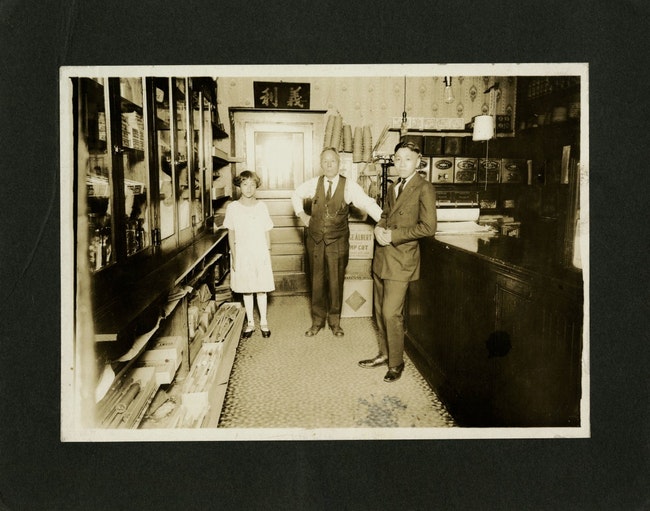 George Lai Sun and Dr. Kum, pictured in 1886 (Oregon State Library archives)
George Lai Sun and Dr. Kum, pictured in 1886 (Oregon State Library archives)
In 2019, the Salem Main Street Association asked residents to suggest names for downtown alleys and vote for their favorites. About 600 people weighed in. As part of Salem Reporter’s local history series, Jacqueline Heavey, chair of the design committee for the project, explains the history behind the chosen alley names with historic photos.
Alley 6 is bounded by Commercial, State, Liberty and Ferry Streets. With 52% of the vote, it was named Hops Alley.
This alley was named for T.A. Livesley, a prominent hop farmer and Mayor of Salem from 1927 to 1931. He was known as the “Hop King” of Oregon and built the Capital Tower on this block. He also built the now-named Mahonia Hall in 1924 for his family. It serves as the official residence of the Governor of Oregon.

A March 27, 1927 article in the Oregon Statesman on T. A. Livesley’s election as mayor of Salem.
Alley 7, now named George Lai Sun Alley, is bounded by State and Ferry Streets and was once the center of a vibrant six block Chinatown in Salem. This block had medicine shops, dry good stores, food markets, opium houses, laundry services, noodle shops and gaming.
George Lai Sun was considered the unofficial Mayor of Chinatown. He lived on the south side of the alley by the Salem Printing & Blueprint shop. This alley runs along Fork Forty Food Hall and during the renovation of the site, artifacts were unearthed such as Chinese pottery, game pieces, and coins. Some of these items are on display in The Best Goose Bar in the back of the building.
Initially invited to help build the region’s roads, levees, dams and railroads, worsening economic times brought scrutiny and discrimination to the immigration of Chinese residents. The federal Chinese Exclusion Act of 1882 made life harder for those residents already here.

The Oregon Statesman’s report on Chinatown’s condemnation in Salem on Jan. 21, 1903.
In Salem, the City Council condemned Chinatown in 1903. Though it was never officially burned as directed by the ordinance, Chinese residents were not able to own property which allowed developers to push out Chinese residents with ever increasing rents. By the 1930’s, not many Chinese residents were left in this area.
In 1922, Hal D. Patton invited George Lai Sun, among many others, to speak at his fiftieth anniversary. These are Sun’s words about his time in Salem: “I like Salem because all people treat me nicely. Then my children all grow up. They can vote but I have been here so long, for fifty-four years next June, I ought to be a citizen. I ought to be voting too. I see some country- man come over to this country; he stay not very long, three or four years; he can vote. Why I be here fifty-four years altogether, why I cannot vote? I ought to be citizen too. They must make mistake, something wrong.”
Other alley name histories
Once a horse stable downtown, Durbin name now graces nearby alley
New alley names pay homage to city’s first steel building, theater that burned
Salem’s alley names provide a glimpse into the past
Editor’s note: This column is a feature from Salem Reporter to highlight local history in collaboration with area historians and historical organizations. If you have any feedback or would like to participate, please contact managing editor Rachel Alexander at [email protected].
JUST THE FACTS, FOR SALEM – We report on your community with care and depth, fairness and accuracy. Get local news that matters to you. Subscribe to Salem Reporter starting at $5 a month. Click I want to subscribe!









